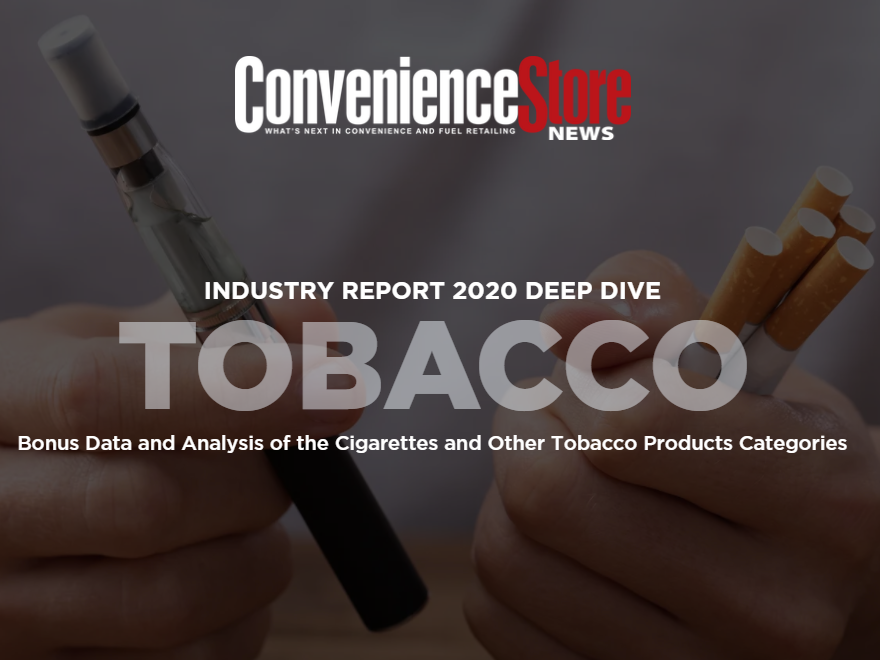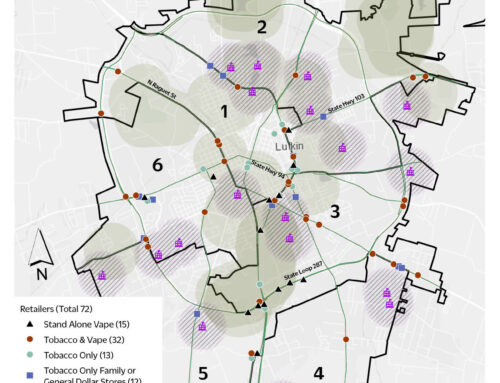Despite public health’s success in tobacco policy over the recent years, we know tobacco remains a top source of revenue for the convenience store industry. In order to identify appropriate policy interventions or other point of sale strategies for tobacco prevention and control, it’s helpful to understand consumer trends. A look at the “Tobacco Deep Dive” Convenience Store News 2020 Industry Report provides insight on these trends within the convenience store (c-store) sector. It’s not often that we are able to access information about tobacco sales from the perspective of retailers, and this report provides added support for many concepts that are critical to tobacco policy efforts. Here are a few of our key takeaways.
The fight against tobacco is far from over.
According to the report, cigarettes and other tobacco products account for 35 percent of all in-store sales in convenience stores. Although the report indicates a slight decline of sales for cigarettes and cigars, there was a major increase in the sale of electronic cigarettes as well as a moderate increase in smokeless tobacco. Unfortunately, these figures align with the rapidly increasing numbers of middle and high school students using e-cigarettes, with numbers rising from 3.6 million in 2018 to 5.4 million in 2019—a difference of about 1.8 million youth.
Density and proximity of tobacco retailers play a role in smoking behaviors.
The report points to convenient store location as the top factor influencing cigarette purchases in c-stores. Public health research also confirms that store location matters. Evidence confirms that a greater availability of tobacco products is associated with higher smoking rates for both youth and adults. From a health equity standpoint, this is particularly concerning since tobacco retailer density is higher in low-income and minority communities. Retailer licensing and zoning are two of the most lasting strategies to impact the density of tobacco retailers, the types of retailers that can sell tobacco, and the location of tobacco retailers.
Increasing the price of tobacco has the potential to influence sales.
Another top factor influencing cigarette purchases in c-stores was price. Again, this comes as no surprise. According to the Surgeon General, raising the price of tobacco products is one of the most effective strategies for reducing initiation, decreasing consumption, and increasing cessation. Over the years, public health has identified several successful strategies for raising the price of tobacco products, including raising excise taxes. There are also non-tax approaches for states and communities facing political barriers to excise tax increases and that can complement excise taxes to keep prices high.
But who really benefits from tobacco sales at c-stores? The tobacco industry.
The three concepts above reinforce the need for comprehensive efforts to counteract commercial tobacco product sales and marketing at the point of sale. Reports like this one are often used to support economic arguments against point of sale policies. However, it’s important to note that tobacco is actually a relatively low-margin product for c-stores. In 2016, while 34.1% of in-store sales were from tobacco, only 18.2% of profits were from tobacco. In comparison, prepared foods were 22% of sales, but 35% of profits, and packaged beverages were 15% of sales but 19% of profits. At the same time, the tobacco industry is well aware of the value of the retail environment on their bottom line. In 2018, the tobacco industry spent over $7.2 billion to advertise and promote their products at the point of sale, with a majority of this money directed towards price promotions and promotional allowances paid to retailers. Unsurprisingly, this spending pays off, with over ⅓ of c-store shoppers purchasing cigarettes in a month. Not only do these incentives paid to retailers help keep people hooked on tobacco, but they also keep the retailers dependent on tobacco companies through detailed contracts dictating sale price and product placement.
The good news is that we have plenty of strategies for counteracting commercial tobacco product sales and marketing at the retail store. These strategies include those mentioned above, like retailer licensing and zoning or raising excise taxes, as well as others such as, minimum pack sizes and restrictions on the sale of flavored tobacco products. Check out countertobacco.org for a full menu of evidence-based, flexible strategies to help local, state, and federal practitioners select the best and most effective solutions for their communities.





